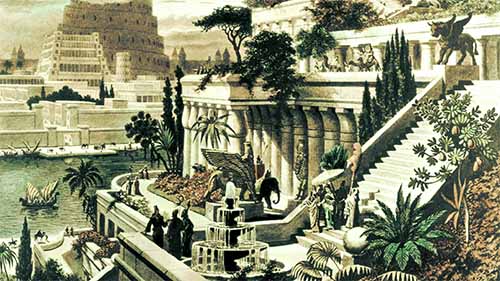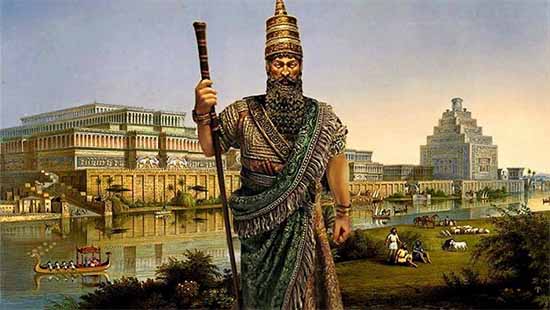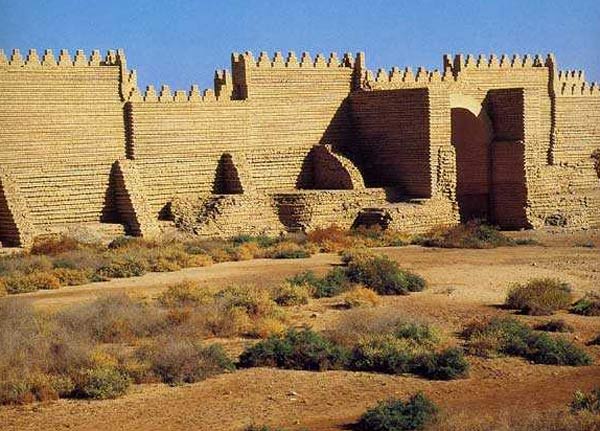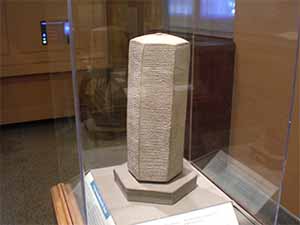Where Are The Hanging Gardens of Babylon Located ?
Current Location Thesis According To Oxford Expert

It is to the ancient Greeks that we owe the list of the Seven Wonders of the World, ancient historical monuments that testify to all the power of these great civilizations. The Great Pyramid of Giza is the only wonder that we can still admire to this day. Five others fall into ruin or do not exist anymore: the Lighthouse of Alexandria, the Colossus of Rhodes, the Mausoleum of Halicarnassus, the temple of Artemis and the statue of Zeus at Olympia. These monuments have all been formally located and have revealed their secrets following archaeological excavations. The last on the list, the Hanging Gardens of Babylon, is the most mysterious of all. Very little is known about it and reliable documentary sources are virtually non-existent. Among the mysteries to be elucidated include its exact location, its description and even if they really existed.
Hanging Gardens of Babylon Facts

The earliest descriptions of Hanging Gardens of Babylon date from the Classical period and are attributed to a Babylonian priest and various other writers, including Ctesias of Cnidus, who lived at that time. These ancient writings published under the title of "Babyloniaca" and "Persica" have long since disappeared and no trace remains of it today. If we know small parts of their contents, it is thanks to the stories of Greek and Roman writers of the 1st century BC who quoted these works. The geographer Strabo, in his book "Geography", left us the following description made from Greek authors and leaves much room for imagination:
"The garden is quadrangular in shape and each side is 4 plete. It consists of arched arches which are located, one behind the other, on cubic bases checkerboard. These basements, which are hollowed out, are covered with so much earth that they can receive the largest of trees, because the basements themselves, the vaults and the arches, are constructed of raw brick and bitumen. The climb to the highest roof terrace is via a staircase; and along this staircase there were screws of Archimedes, through which water was continually conveyed upward, in the garden, from the Euphrates, by those who were employed in this task, for the river, wide of a stadium, flows in the middle of the city; and the garden is on the bank of the river."

There are also some other descriptions from famous historians like Flavius Josephus or Diodorus Siculus who leave a vague imagery in his biography of Alexander the Great. These more recent documents attribute for the most part the creation of hanging gardens to the king of the neo-Babylonian empire Nebuchadnezzar who lived a few decades before the classical period. The Babylonian empire was at that time marked by a great period of prosperity that allowed the construction of many monuments such as the ramparts and Hanging Gardens of Babylon. The story goes that the king's wife, Amyitis, grew up in the mountainous regions and suffered from homesickness after arriving in the hot and arid weather of Mesopotamia. King Nebuchadnezzar would have built huge gardens to appease her sickness and remind her of the plants and landscape of her childhood. However, it is impossible to know if this beautiful romantic story is true or simply a colorful anecdote to complete the puzzle.

Did Hanging Gardens of Babylon really exist ?
Many things seem to indicate that these gardens have probably never existed. First, modern archeology provides no answer. The campaigns of excavations around the palaces of Babylon are counted by ten and always no traces of the gardens. In addition, accessibility to the site of ancient Babylon, which is in Iraq, is very limited and arduous due to the war and limits the possibilities of search. Also, it is possible that the Euphrates river that once ran in the middle of the city has flooded the ruins and that the remains of the gardens are now at the bottom of the water. Research carried out over a vast area of the ancient city has revealed the ramparts and the grand palace; but the location of the Hanging Gardens of Babylon remains a mystery. It must be insisted, however, that archaeological research are far from over although they covered a large area.

Another argument against the existence of such gardens in the region of Babylon is that no text of the time mentions it. Numerous inscriptions have been found in the foundations of the monuments of King Nebuchadnezzar and a hundred of these documents have been studied yet none of them speak of hanging gardens. Also, Herodotus, historian of the fifth century BC and considered the oldest of humanity, makes no mention of it even if he knew the city of Babylon very well for having lived there himself. Ancient Greek authors are also to be taken with a grain of salt since their writings were based on oral descriptions frequently unfounded. It is possible that the ramparts, much more impressive at the time, supplanted the existence of the hanging gardens. This suggests that either the stories and legends are based on wind, or the famous Hanging Gardens of Babylon are actually elsewhere in the country. This is the opinion of Stephanie Dalley, Oxford University, who was greatly interested in the subject and believes that the last wonder of the ancient world could rather be found in Nineveh.
The palace of Sennacherib in Nineveh

By decoding a prism containing cuneiform writing discovered in the ruins of a palace of King Sennacherib in Nineveh, Stephanie Dalley found indications of a palace with elevated surroundings. It is also possible to read a description from the king himself:
"I built next to the palace an elevated garden that imitates the chains of the Manus. It is planted with all kinds of aromatic essences, fruit trees, trees that make the wealth of the mountains of Babylon and trees that give breath. "
The researcher also studied a bas-relief as it is common to meet in the palaces of the time. It is possible to see trees that seem to float in the air and plants that overlook arches. There is also the Jerwan Aqueduct built by King Sennacherib to carry water from the Kinis Mountains, 100 km through the desert to the capital of Nineveh, which at its peak was the largest city of the world. Engravings preserved in the British Museum also exhibit a high garden in Nineveh. It is possible to observe an Assyrian king surrounded by trellises whose lush vines hang around him.  Sennacherib seemed fascinated by plants and nature. One can easily imagine the king retiring in the tranquility of a pleasure garden, surrounded by plants and streaming water to escape the scorching heat and the daily hassle of his yard. This is reminiscent of Aladdin and The Thousand and One Nights. But even though it is well known that the conqueror had a weakness for gardens and that he possessed irrigation techniques and capacity, there is still no tangible proof that he is the creator of the Hanging Gardens of Babylon. The idea of a lush palace where trees seem suspended in the air and where water flows defying the laws of gravity is perhaps a metaphor for people to escape the cruelty of the Mesopotamia desert. Are the Hanging Gardens of Babylon the work of a king eager to show his mastery of nature? Who knows, the story may be right for the researcher at Oxford University ...
Sennacherib seemed fascinated by plants and nature. One can easily imagine the king retiring in the tranquility of a pleasure garden, surrounded by plants and streaming water to escape the scorching heat and the daily hassle of his yard. This is reminiscent of Aladdin and The Thousand and One Nights. But even though it is well known that the conqueror had a weakness for gardens and that he possessed irrigation techniques and capacity, there is still no tangible proof that he is the creator of the Hanging Gardens of Babylon. The idea of a lush palace where trees seem suspended in the air and where water flows defying the laws of gravity is perhaps a metaphor for people to escape the cruelty of the Mesopotamia desert. Are the Hanging Gardens of Babylon the work of a king eager to show his mastery of nature? Who knows, the story may be right for the researcher at Oxford University ...









































































































































































































































































































































